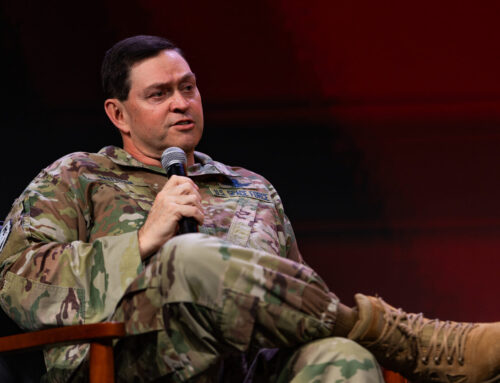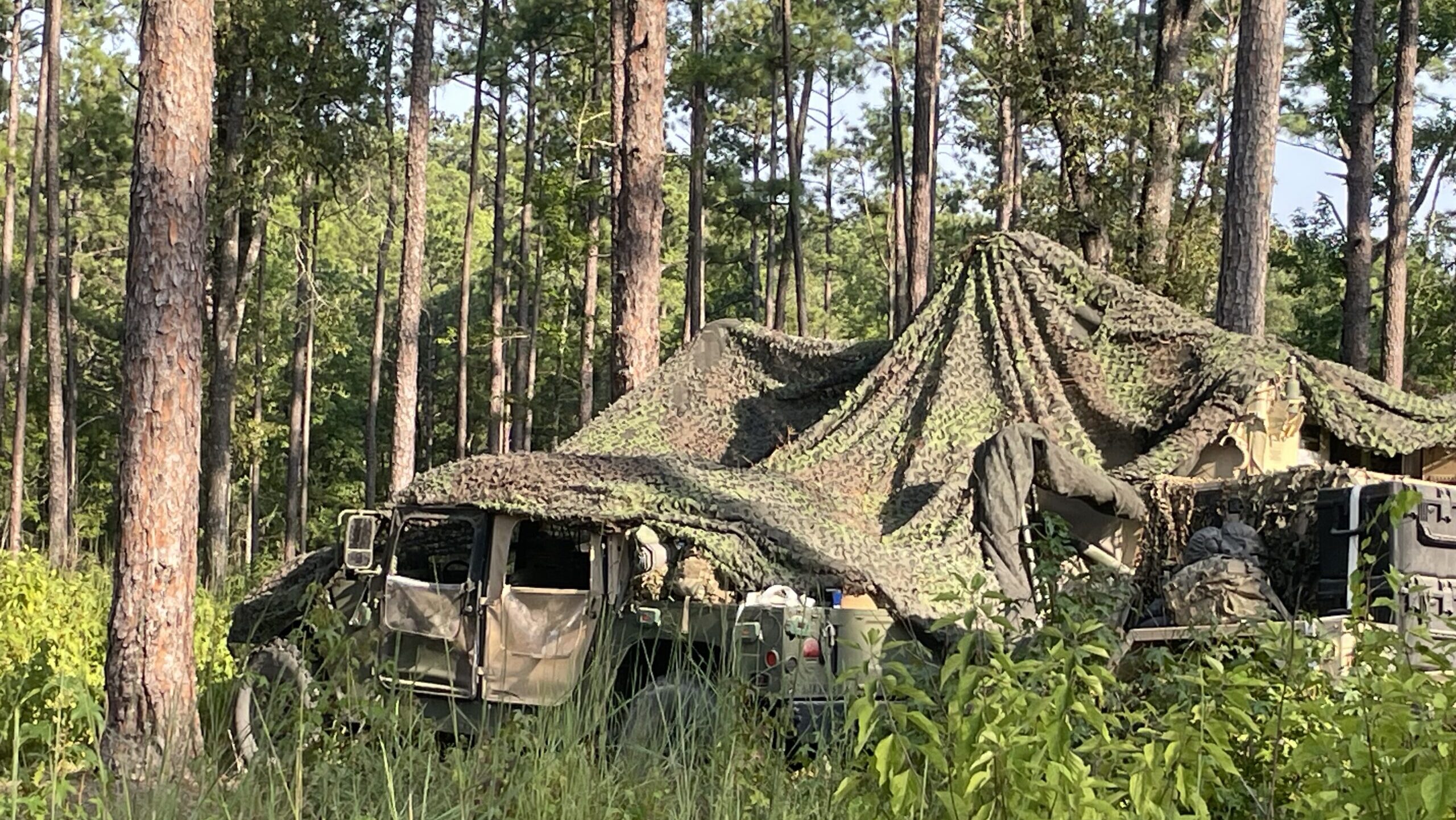Soldier is Using Laptop Computer for Tracking the Target and Radio for Communication During Military Operation in the Desert (Getty images)
TECHNET AUGUSTA 2024 — The Army’s radio as-a-service pilot is going less than perfect, Mark Kitz, program executive officer for command, control and communications-tactical said today.
During a keynote address here in Augusta, Kitz explained that the pilot, which was announced nearly two years ago and finally began in the spring, has had early struggles due to the Army being unsure of where to allocate its investments.
“I think we’re still struggling with what are the upfront investments the Army needs to make, and then what’s the return on investment for you in industry,” he said, adding that the direction it’s headed is “not clear.”
“I think lukewarm would be my assessment right now,” he later stated regarding the program.
The radio as-a-service program is an Army initiative to move away from its old processes for buying radios. On paper, it has the potential to provide the Army with the most up-to-date radios and communication gear all while lowering costs and being an innovator in software and hardware resilience.
With an as-a-service model, the Army is expected to treat its new equipment like a subscription — like when companies provide goods or services on a rolling basis while also keeping the products updated. If it works, the model will allow the Army to lease the capabilities it needs at the point of need instead of having to procure, sustain and modernize the equipment on its own for each unit and mission.
The Army has nearly 350,000 radios it wants to eventually modernize, which is too many to cost-effectively modernize in a timely manner, particularly if the US wants to outpace the looming threats of adversaries like China and Russia who have advanced communication capabilities.
“I think in our as-a-service model, I think we’re maybe having mixed results on radio as-a-service,” Kitz said. However, he added, “I would tell you, the Under Secretary of the Army is very committed to it, and he believes we’re going to get strong return on investment. I think that’s going to be a continued conversation with industry.”
It’s important to note that pilots often are just that, and are used to work the bugs out early in the process. Kitz pointed to another effort, the SATCOM as-a-service pilot program which he said received “really positive feedback on industry’s ability to meet the demand cycle and our ability to be responsive to user demand.”
The SATCOM program works similarly to the radio program, but its goal is to provide commercial satellite communications using an as-a-service model.











